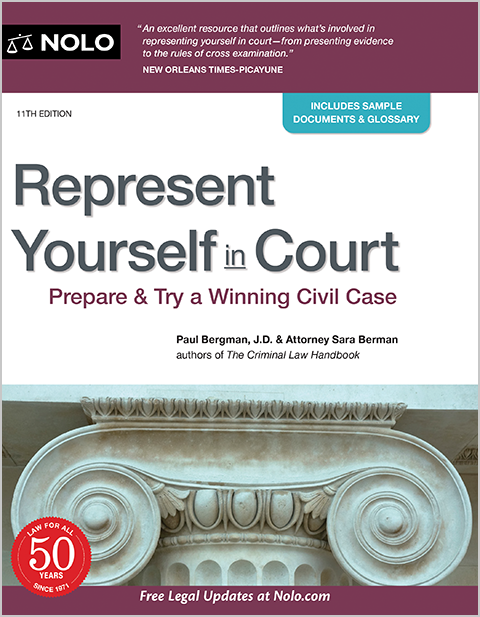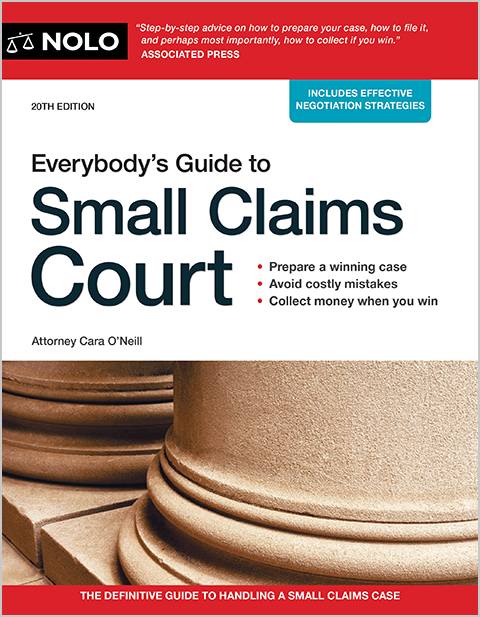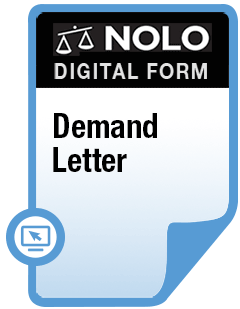You got a Colorado money judgment. Now it's time to collect. We explain how to record Colorado judgment liens, collect on a lien, extend your judgment, and more.
You went to court and got a judgment that says you're entitled to money from the party you sued, now called a "judgment debtor." What comes next? How can you—the judgment creditor—collect the money you're due? That's the focus of this article.
One way to collect is by putting judgment liens on the judgment debtor's Colorado property. After a quick review of how judgment liens differ from judgments, we'll turn our attention to the specifics of Colorado law. In particular, we cover:
- the kinds of property subject to Colorado judgment liens
- how you put judgment liens on Colorado property
- how long your judgment lien lasts and how you can extend it, and
- the ways you can turn your judgment lien into money.
If you want some background information, here's more about how court judgments are collected.
What's the Difference Between a Judgment and a Judgment Lien?
A judgment is a court order that says a judgment creditor is legally entitled to a sum of money from a judgment debtor. But a judgment, standing alone, isn't self-enforcing. That is, you can't take a judgment to your county sheriff's office and demand that the judgment debtor's real estate be sold to pay you.
If you want to seize and sell the judgment debtor's property, you first have to attach your judgment to specific items of property. That's what a judgment lien does. As we'll see below, once you take the correct steps to record a certified transcript of your judgment, it becomes a lien against the judgment debtor's property. At that point, you can look for ways to turn your judgment into cold, hard cash.
Kinds of Property Subject to Colorado Judgment Liens
In Colorado, you can attach judgment liens only to real estate, meaning land, buildings, and other improvements. When you properly file a certified judgment transcript (see below), the lien attaches to real estate the judgment debtor:
- presently owns, and
- acquires later, as long as your judgment lien is still good.
No Liens on Personal Property
You can't put judgment liens on Colorado personal property—cars, artwork, antiques, electronics, household furnishings, and the like. But that doesn't mean a judgment debtor always gets to keep their autos, boats, and other big ticket items. Even without judgment liens, there's a way to have the sheriff seize personal property.
If you're considering this step, speak to a Colorado collection lawyer first. They can tell you whether it's worth your time and expense to go after the judgment debtor's personal property—and there's a good chance it won't be. If it's likely to be worthwhile, they'll guide you through the process.
Colorado Exemptions
Like all states, Colorado exempts some property—both real and personal—from the reach of creditors. Exempt amounts mentioned here represent the value of the debtor's equity in the property, which might not be the same as the property's market value.
Here are a few examples:
- a homestead, consisting of a dwelling occupied as a home and real estate, valued at up to $250,000 ($350,000 if occupied by an owner, spouse, or dependent who's elderly or disabled)
- books, equipment, tools, and similar property valued at up to $60,000 and used in the judgment debtor's primary occupation
- two motor vehicles worth up to $15,000 ($25,000 if the debtor, the debtor's spouse, or a dependent is elderly or disabled)
- tax exempt pension or retirement plans or individual retirement accounts (IRAs), and
- household goods with an aggregate value of up to $6,000, including furniture, furnishings, appliances, cookware and utensils, electronics, and more.
How to Attach Judgment Liens to Real Estate
A Colorado state or federal court judgment becomes a judgment lien on the debtor's nonexempt real estate in the county upon filing a certified judgment transcript—a summary of the judgment, certified by the court clerk as authentic—with the county clerk and register's office. You should file a certified transcript in each county where the judgment debtor owns, or might in the future own, real estate.
For more help, including links to online forms and instructions, see the Colorado judiciary's "Collecting a Judgment" page.
Getting a Certified Judgment Transcript
You get a certified judgment transcript from the clerk of the court where the judgment was entered.
Start with the court clerk's website. Most courts let you request a judgment transcript online. For example, here's the online request form for the Denver County District Court. If you don't find what you're after online, call the clerk's office, tell them you need a judgment transcript, and ask about local procedures.
You'll need an original certified judgment transcript for each county where you want a judgment lien. You can't simply request one certified transcript and make copies.
Recording the Judgment Transcript
Once again, the best place to start is online. Most county clerks and recorders provide detailed instructions for filing and recording documents, and many offer electronic (online) recording. Larimer County is a good example. You can file and record documents there by mail, in person, or electronically.
If you don't find online instructions, call the clerk's office.
When Does a Colorado Judgment Lien Expire?
In Colorado, a judgment lien expires six years from the date the judgment was entered. What happens if you haven't collected your judgment before your lien expires? The short answer is: You'll need to extend your lien, as described in the next section.
How Long Does a Colorado Judgment Last?
Colorado District Court judgments are good for 20 years from the date of entry. But a Colorado County Court judgment only lasts for 6 years from the date it was entered. Once your judgment expires, it's legally dead. Barring exceptional circumstances, you can't take any steps to enforce it—meaning you've lost the right to collect the money you're due.
You can keep your judgment alive by making good faith efforts to collect it, and by reviving it before it runs out.
Reviving a Colorado Judgment
You're allowed to revive a Colorado judgment, but you must act before the judgment expires. To do that, you file (in the court where your judgment was originally entered):
- a Motion for Revival of Judgment (Form JDF 113)
- a Notice to Show Cause for Revival of Judgment (Form JDF 114), and
- an Order for Revival of Judgment (Form JDF 125).
The Colorado judiciary has these instructions to help you with the revival process. In a nutshell, it goes like this.
Complete the forms, following the instructions, and file them with the court clerk. The court will complete the Notice to Show Cause—an order to the judgment debtor to appear and defend the motion—and send it back to you. It's your job to arrange to have the debtor served with this notice. After the debtor has been served, you must file an Affidavit of Service (Form JDF 98) with the court clerk.
Once served, the judgment debtor has 14 days to respond and explain why the judgment shouldn't be revived. If they don't respond, the court will sign the order of revival. If they do, the court will hold a hearing and issue a decision. You'll want to have an attorney represent you in court, should a hearing be necessary.
Start this process early enough so you have time to complete it (and extend your judgment liens) before your judgment expires. A local attorney can provide specifics but at a minimum, plan on it taking at least six months.
Extending Your Judgment Liens
Reviving your judgment doesn't automatically extend your judgment liens. If you still want those liens—and you do, if you still haven't collected what you're owed—you must extend the judgment liens. The process for extending a lien is much the same as the process for getting a lien in the first place.
Get certified copies of the revived judgment transcript from the clerk of the court, one for each county where you want to extend your lien. File a certified transcript with the county clerk and recorder in each county. Once you do that, you've extended your judgment lien.
How Do You Turn a Colorado Judgment Lien Into Money?
In general, there are three ways you can try to collect on a Colorado judgment lien:
- negotiate a settlement
- wait for the judgment debtor to sell or refinance the property, and
- execute on your lien.
Negotiate a Settlement
If you want payment sooner rather than later, this is likely your best choice. No, you won't get all the money you're entitled to, but that's the nature of a settlement. You'll collect faster—and more inexpensively—than via the other two options.
Wait for the Judgment Debtor to Sell or Refinance
Most often, a buyer or lender will insist on clear title, free of all judgment liens. So, to sell or refinance, the judgment debtor will have to approach you to make a deal. Only now, you've got more negotiating leverage. As long as you're willing to sit tight and wait, this too is a low-cost, low-stress way to collect.
Execute on Your Lien
Executing on your lien means having the sheriff sell the judgment debtor's property at auction. This might seem like a tempting option. But before you head down this path, check with a local attorney to find out about the legwork and costs involved. In addition, see who's ahead of you in payment priority, or you might discover—too late—that the sale proceeds aren't enough to pay you in full (or at all).
Lastly, be aware that this step might be just the push the judgment debtor needs to declare bankruptcy. Should that happen, you're likely to be standing in a long, very unhappy line of creditors with little chance of getting paid.
Next Steps
We've covered the judgment lien basics, but of course, the devil's in the details. Now that you're familiar with Colorado law, you might decide that your best option is to get help collecting your judgment. An experienced Colorado creditor's rights or collection attorney can answer your questions and help you chart a collection path that gives you the best chance to maximize your recovery.



